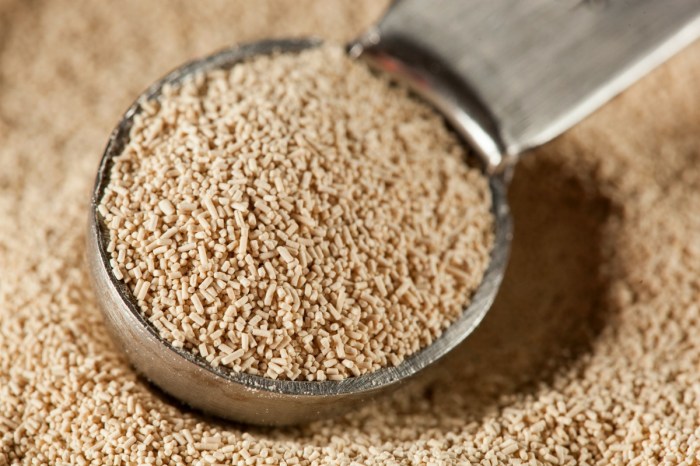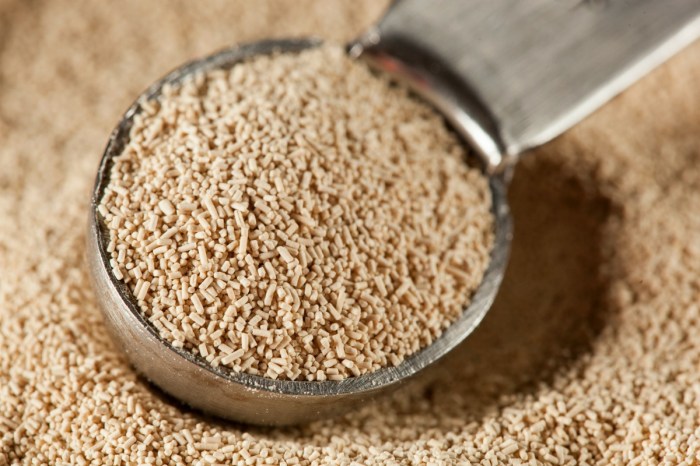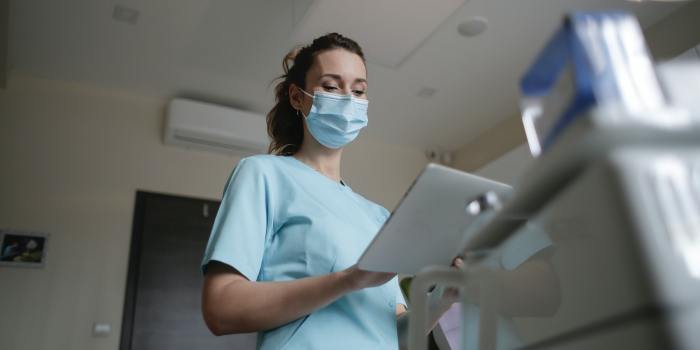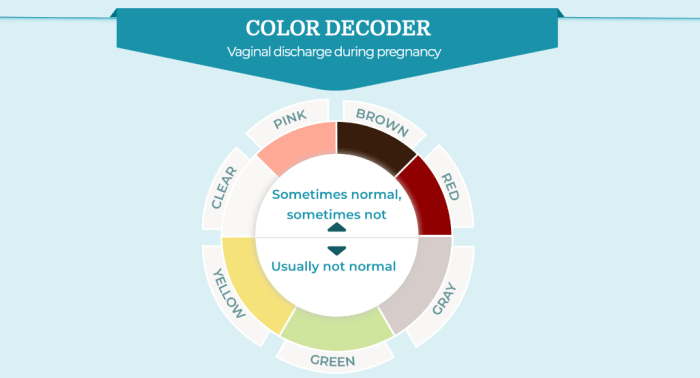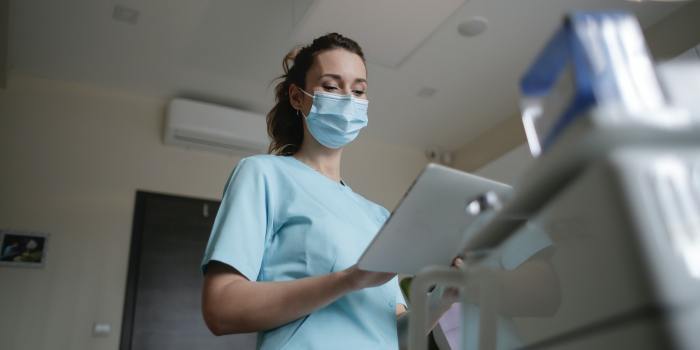Vulvitis causes symptoms and treatment – Vulvitis causes, symptoms, and treatment is a crucial guide for understanding this often-overlooked condition. From the various types of vulvitis and their underlying causes, to the key symptoms and effective treatment options, this comprehensive resource offers valuable insights for individuals seeking information and support. This blog post will provide a thorough overview of vulvitis, covering everything from its common causes to the different treatment approaches.
Understanding the complexities of vulvitis requires exploring the anatomy of the vulva, recognizing the different types of vulvitis, and exploring the prevalence and demographics. This is a complex topic, so let’s break it down in an approachable way.
Introduction to Vulvitis
Vulvitis is a general term for inflammation of the vulva, the external female genitalia. It’s a common condition that can affect women of all ages, though it’s more prevalent in certain demographics. This inflammation can manifest in various ways, ranging from mild discomfort to severe pain, and can be caused by a variety of factors. Understanding the causes, types, and prevalence of vulvitis is crucial for proper diagnosis and treatment.The vulva encompasses the external female genitalia, including the labia majora and minora, clitoris, vaginal opening, and surrounding tissues.
Dealing with vulvitis can be tricky, understanding its causes, symptoms, and treatments is key. Often, irritation and inflammation are the culprits, but sometimes underlying conditions are at play. While researching different potential remedies, you might stumble upon discussions about the nutritional benefits of beef liver, a superfood that’s packed with vitamins and minerals. Is beef liver a superfood ?
The truth is, focusing on a balanced diet and identifying potential triggers is more important than any single food for managing vulvitis. So, while beef liver might be a great addition to a healthy diet, it’s not a cure-all for vulvitis. It’s always best to consult a healthcare professional for personalized advice on vulvitis.
The sensitive skin of the vulva is prone to irritation and inflammation, making it susceptible to various conditions. This anatomical structure plays a vital role in understanding the different types and locations of vulvitis.
Types of Vulvitis
Vulvitis can be broadly categorized into several types, each with its own set of contributing factors. Understanding these categories helps clinicians and individuals distinguish the potential underlying causes of the inflammation.
- Allergic Vulvitis: This type of vulvitis arises from an allergic reaction to substances such as certain fabrics, detergents, or perfumes. Contact with these allergens can trigger an inflammatory response in the vulvar tissues. For example, a woman experiencing irritation and redness after wearing a new pair of underwear might be experiencing allergic vulvitis.
- Infectious Vulvitis: Infections, including bacterial, fungal (like yeast infections), and viral infections, can cause vulvitis. These infections can result in itching, burning, and discharge, among other symptoms. A common example is a yeast infection, often characterized by intense itching and thick, white discharge.
- Irritant Vulvitis: This type of vulvitis is typically caused by prolonged or repeated exposure to irritating substances. Examples include soaps, lotions, or tight-fitting clothing. The resulting inflammation is often characterized by redness, pain, and discomfort.
Prevalence and Demographics
Vulvitis affects women of all ages, although certain demographic groups may experience it more frequently. The prevalence is challenging to pinpoint precisely due to varying symptom reporting and diagnostic criteria. However, studies suggest that vulvar discomfort and inflammation are relatively common among women, impacting their daily lives and well-being. While further research is needed to fully understand the prevalence, it’s clear that vulvitis is not a rare occurrence.
Anatomy of the Vulva
The vulva’s complex anatomy plays a significant role in understanding vulvitis. The external genitalia are sensitive and prone to irritation, making them susceptible to various conditions.
- Labia Majora and Minora: These folds of skin protect the more delicate inner structures of the vulva. Irritation or inflammation in these areas can lead to discomfort and pain.
- Clitoris: The clitoris is a highly sensitive organ with rich nerve endings. Inflammation or irritation in this area can cause significant pain.
- Vaginal Opening: The opening of the vagina is closely associated with the vulva. Conditions affecting the surrounding tissues can lead to vulvitis.
Causes of Vulvitis
Vulvitis, inflammation of the vulva, can have various underlying causes. Understanding these factors is crucial for appropriate diagnosis and treatment. It’s important to remember that vulvitis is not a disease itself but rather a symptom of an underlying condition. Identifying the cause is key to effectively addressing the inflammation and associated discomfort.Many factors can contribute to vulvitis, ranging from simple irritations to more complex medical issues.
Pinpointing the specific cause is often essential for determining the most suitable treatment plan. This section will delve into the most common infectious and non-infectious causes, as well as the role of hygiene and medical conditions.
Frequent Infectious Agents
Infections are a significant cause of vulvitis. Identifying the specific infectious agent is crucial for appropriate treatment. Common culprits include bacterial vaginosis, yeast infections (candidiasis), and sexually transmitted infections (STIs). These infections can disrupt the delicate balance of the vaginal microbiome, leading to inflammation and discomfort.
- Bacterial vaginosis (BV) is a common bacterial infection that disrupts the normal vaginal flora. Symptoms often include a thin, grayish-white discharge, itching, and a fishy odor. BV is often asymptomatic, but can cause vulvitis.
- Yeast infections (candidiasis) are caused by the overgrowth of yeast, typically
-Candida albicans*. Symptoms frequently include intense itching, burning, and a thick, white discharge. Yeast infections are often recurrent. - Sexually transmitted infections (STIs) like trichomoniasis, herpes, and gonorrhea can also cause vulvitis. These infections often present with other symptoms beyond vulvar inflammation, such as sores, blisters, or unusual discharge. Prompt diagnosis and treatment are essential to prevent complications.
Non-Infectious Causes
Beyond infections, several non-infectious factors can trigger vulvitis. These include allergies and irritants, which can cause a local inflammatory response. Certain hygiene practices can also contribute to the development of vulvitis.
- Allergies and Irritants: Allergic reactions to detergents, soaps, perfumes, fabric softeners, and even certain types of clothing can cause vulvar irritation and inflammation. Direct contact with irritants like harsh chemicals or tight clothing can also trigger vulvitis.
- Hygiene Practices: While maintaining good hygiene is crucial for overall health, overly aggressive cleansing or the use of harsh soaps can disrupt the natural pH balance of the vulvar area, leading to irritation and inflammation. Excessive douching can also be detrimental, potentially introducing irritants or disrupting the natural flora.
Role of Medical Conditions
Various medical conditions can indirectly contribute to vulvitis. Autoimmune disorders, such as lupus, can sometimes affect the vulvar tissue, leading to inflammation. Certain hormonal imbalances, particularly during menopause, can also contribute to vulvar dryness and irritation.
- Autoimmune Disorders: Conditions like lupus can cause inflammation throughout the body, including the vulva. The inflammation associated with autoimmune disorders can lead to vulvitis.
- Hormonal Imbalances: Changes in hormone levels, such as those experienced during menopause, can lead to decreased estrogen production. This can result in vaginal dryness, thinning of the vaginal tissues, and increased susceptibility to irritation and inflammation, manifesting as vulvitis.
- Skin Conditions: Conditions like eczema and psoriasis can affect the vulvar skin, leading to inflammation and irritation. The specific manifestations of these conditions can vary greatly.
Comparison of Vulvitis Causes
| Cause | Infectious Agent | Non-Infectious Agent | Medical Condition |
|---|---|---|---|
| Bacterial Vaginosis | Bacteria | ||
| Yeast Infection | Yeast | ||
| Allergic Reaction | Irritant, Allergen | ||
| Poor Hygiene | Hygiene Products | ||
| Lupus | Autoimmune Disorder | ||
| Menopause | Hormonal Imbalance |
Symptoms of Vulvitis

Vulvitis, an inflammation of the vulva, presents with a range of symptoms that can vary in severity and presentation. Understanding these symptoms is crucial for early detection and appropriate treatment. Recognizing the specific symptoms associated with different types of vulvitis can aid in accurate diagnosis and personalized management.Recognizing the symptoms of vulvitis is key to prompt treatment. The symptoms can be subtle and easily mistaken for other conditions, making self-diagnosis difficult.
Seeking medical attention for any persistent or concerning vulvar discomfort is always recommended.
Common Symptoms
Common symptoms of vulvitis encompass a range of sensations and physical changes in the vulvar area. These include itching, burning, and redness. Other frequently reported symptoms are swelling, pain, and discomfort. These symptoms can range from mild to severe, depending on the underlying cause and individual response.
Symptoms Specific to Different Types of Vulvitis
The specific symptoms of vulvitis can vary depending on the underlying cause. For example, allergic reactions or infections can manifest differently compared to hormonal changes. Candida vulvovaginitis, a common fungal infection, typically presents with intense itching, thick, white discharge, and burning. Bacterial vaginosis, a bacterial imbalance, may present with a thin, grayish-white discharge, along with itching and burning.
Irritant contact dermatitis, often triggered by harsh soaps or chemicals, typically manifests as redness, swelling, and burning. Lichen sclerosus, a chronic inflammatory condition, can cause thinning, hardening, and cracking of the skin, along with itching.
Visual Description of Common Symptoms
| Symptom | Mild | Moderate | Severe |
|---|---|---|---|
| Redness | Slight, localized redness | Diffuse redness, extending to surrounding areas | Intense, widespread redness, possibly with discoloration |
| Itching | Mild, intermittent itching | Moderate, persistent itching, disrupting sleep | Severe, constant itching, leading to skin damage |
| Swelling | Slight, barely noticeable swelling | Noticeable swelling, potentially affecting the vaginal opening | Significant swelling, potentially causing discomfort and difficulty with movement |
| Discharge | Minimal, clear or slightly whitish discharge | Increased discharge, possibly thick or yellowish | Significant discharge, potentially foul-smelling, or accompanied by pain |
Potential Warning Signs
Certain symptoms, when present, warrant immediate medical attention. These include fever, chills, unusual or foul-smelling discharge, pain during urination or intercourse, and any signs of skin breakdown or ulceration. These signs could indicate a more serious underlying condition requiring prompt medical evaluation.
Importance of Early Detection
Early detection of vulvitis symptoms is crucial for preventing complications and ensuring effective treatment. Untreated vulvitis can lead to chronic discomfort, infections, and potentially other health issues. Regular self-examination and prompt consultation with a healthcare professional are vital for maintaining vulvar health.
Variations in Symptoms Based on Age
Symptoms of vulvitis can manifest differently depending on the age of the individual. Infants and young children may exhibit symptoms such as redness, swelling, and irritability around the vulvar area. Teenagers and adults may experience similar symptoms but may also present with additional concerns like changes in vaginal discharge or pain during sexual activity. It is essential to understand that vulvitis symptoms can vary significantly between age groups, making prompt evaluation and appropriate treatment all the more important.
Diagnosis of Vulvitis
Diagnosing vulvitis involves a multifaceted approach, combining a thorough medical history, a detailed physical examination, and potentially, additional diagnostic tests. The goal is to identify the underlying cause of the inflammation and tailor treatment accordingly. This process allows healthcare providers to differentiate between various potential causes and ensure appropriate management for the patient.Accurate diagnosis of vulvitis hinges on a comprehensive understanding of the patient’s symptoms, medical history, and physical presentation.
A meticulous approach, incorporating a detailed history and physical examination, helps to pinpoint the root cause of the condition, paving the way for effective and targeted treatment.
Medical History, Vulvitis causes symptoms and treatment
A thorough medical history is crucial in the diagnostic process. It provides valuable context for understanding the patient’s overall health, potential risk factors, and the specific characteristics of their vulvitis. This includes inquiring about any pre-existing medical conditions, recent infections, use of medications (including over-the-counter drugs and herbal remedies), allergies, sexual history, and hygiene practices. The detailed history helps to narrow down possible causes and identify potential contributing factors.
For instance, a history of diabetes or weakened immune system may suggest a higher risk of certain types of vulvitis.
Physical Examination
A careful physical examination of the vulva is essential for identifying the extent and characteristics of the inflammation. The examiner will visually inspect the vulvar area, paying close attention to the presence of redness, swelling, lesions, discharge, pain, or itching. The location, size, and appearance of any abnormalities are noted. The examination also includes palpating the affected areas to assess for tenderness or induration.
This physical assessment helps differentiate between various types of vulvitis, identifying specific features that might point towards a particular etiology.
Diagnostic Tests and Procedures
In some cases, additional diagnostic tests may be necessary to determine the underlying cause of vulvitis. The choice of tests depends on the suspected cause and the results of the initial history and physical examination.
- Microscopic Examination of Samples: This often involves obtaining a sample of the discharge or skin lesion for microscopic analysis. This examination can identify the presence of yeast, bacteria, or other pathogens, aiding in the diagnosis of infections like candidiasis or bacterial vaginosis. This procedure is a critical step in differentiating between various infectious causes of vulvitis.
- Culture and Sensitivity Tests: These tests identify the specific type of bacteria or fungus causing the infection and determine which antibiotics or antifungals will be most effective. Cultures provide crucial information to tailor treatment, ensuring that the prescribed medications target the precise causative agent. This is vital for successful resolution of the infection.
- Pap Smear: A Pap smear is a screening test for cervical cancer, but it can also be used to assess for abnormal cells or inflammation in the vulvar area. This test can be particularly useful in cases where there is a suspicion of a sexually transmitted infection (STI) or other underlying conditions.
- Biopsy: A biopsy involves taking a small tissue sample for examination under a microscope. This procedure is typically reserved for cases where the cause of vulvitis remains unclear after other tests or when there are suspicious lesions or abnormal growths. A biopsy can be crucial in ruling out potentially serious conditions.
Differentiating Causes
The diagnostic approach should consider the different potential causes of vulvitis. A careful evaluation of the medical history, physical examination findings, and results of any diagnostic tests will help distinguish between various etiologies. For example, if the patient reports a history of frequent yeast infections, candidiasis would be a likely suspect. If the patient reports experiencing itching or discomfort after using a new detergent or soap, an allergic reaction could be the primary concern.
| Diagnostic Test | Purpose | Expected Result (Positive) | Interpretation |
|---|---|---|---|
| Microscopic Examination of Samples | Identify pathogens | Presence of yeast, bacteria, or other organisms | Suggests infection, guides treatment |
| Culture and Sensitivity Tests | Identify specific pathogen, determine antibiotic/antifungal sensitivity | Identification of specific bacteria or fungus, antibiotic/antifungal susceptibility | Precise identification for tailored treatment |
| Pap Smear | Screen for cervical abnormalities, detect vulvar inflammation | Presence of abnormal cells or inflammation | May suggest STI or other underlying conditions |
| Biopsy | Assess tissue for abnormalities | Presence of atypical cells or growths | Indicates need for further evaluation, potential serious condition |
Treatment Options for Vulvitis: Vulvitis Causes Symptoms And Treatment
Vulvitis, inflammation of the vulva, can manifest in various ways, requiring personalized treatment approaches. Understanding the underlying cause is crucial for effective management. This section explores the diverse treatment options, considering the specific needs of each individual.Effective vulvitis treatment often involves a multifaceted approach, addressing both the immediate symptoms and the root cause of the inflammation. This may involve topical medications, lifestyle adjustments, or even oral therapies, depending on the severity and specific trigger.
The goal is to alleviate discomfort, promote healing, and prevent recurrence.
Topical Medications
Topical medications are frequently the first line of treatment for vulvitis. These localized therapies deliver medication directly to the affected area, minimizing systemic side effects. A wide range of topical creams, ointments, and gels are available, containing ingredients such as antifungals, antivirals, or corticosteroids, depending on the suspected cause. For example, topical antifungal creams can effectively treat yeast infections, a common cause of vulvitis.
Oral Medications
In cases where topical treatments prove insufficient or the cause of vulvitis is systemic, oral medications may be necessary. Oral corticosteroids, for example, can be prescribed for severe inflammation, but their use is typically reserved for short-term management. Oral antifungals or antivirals might be considered in cases of persistent or recurrent infections. The decision to use oral medications is made in consultation with a healthcare provider, weighing the benefits against potential side effects.
Lifestyle Changes
Lifestyle modifications play a significant role in managing vulvitis. Maintaining good hygiene practices, such as gentle cleansing and avoiding harsh soaps or detergents, can significantly reduce irritation. Wearing breathable, cotton underwear can also help prevent moisture buildup and promote air circulation, decreasing the risk of fungal infections. A balanced diet and sufficient hydration can support overall health, potentially influencing the body’s response to inflammation.
Personalized Treatment Plans
Treatment plans for vulvitis must be tailored to the individual. The specific cause and severity of the condition will determine the most appropriate course of action. For example, a mild yeast infection might respond well to topical antifungal creams, while a more severe case of vulvitis stemming from an underlying condition may necessitate a combination of topical treatments, oral medications, and lifestyle modifications.
Open communication with a healthcare provider is essential for developing a personalized treatment plan that addresses individual needs and concerns.
Comparison of Treatment Options
| Treatment Option | Mechanism of Action | Advantages | Disadvantages |
|---|---|---|---|
| Topical Antifungal Creams | Target fungal overgrowth | Localized effect, generally well-tolerated | May not be effective for severe infections, may require multiple applications |
| Oral Antifungals | Systemic treatment of fungal infections | Effective for persistent or widespread infections | Potential for side effects, may require longer treatment duration |
| Topical Corticosteroids | Reduce inflammation | Effective for inflammatory vulvitis | Potential for thinning of skin, prolonged use may lead to dependence |
| Lifestyle Modifications | Reduce irritants, promote healing | Generally safe, long-term benefits | May not be sufficient for severe cases, requires patient compliance |
Prevention of Vulvitis

Vulvitis, inflammation of the vulva, can be uncomfortable and even painful. Fortunately, many cases can be prevented through proactive measures. Understanding the contributing factors and implementing preventive strategies can significantly reduce the risk of developing vulvitis.Maintaining a healthy vulva involves more than just occasional cleaning. A preventative approach focuses on establishing a routine that promotes comfort and protects the delicate skin of the vulva from irritants and infections.
Proper Hygiene Practices
Maintaining proper hygiene is crucial in preventing vulvitis. The vulva, like any other skin area, needs gentle cleansing to remove debris and maintain a healthy pH balance. Avoid harsh soaps, perfumed products, or excessive scrubbing.
- Gentle cleansing with plain water is often sufficient. If using soap, choose a mild, unscented, hypoallergenic option.
- Avoid douching, as this can disrupt the natural flora and increase the risk of infection.
- Change sanitary pads or tampons regularly to prevent bacterial growth and irritation.
- Wipe the vulva front to back after bowel movements to prevent fecal bacteria from spreading to the genital area.
Avoiding Irritants
Many substances can irritate the delicate skin of the vulva, leading to inflammation. Identifying and avoiding these irritants is a vital aspect of prevention.
- Certain fabrics, such as tight-fitting or synthetic underwear, can cause friction and irritation. Opt for loose-fitting, breathable cotton underwear.
- Harsh detergents and dyes in laundry products can irritate the skin. Choose mild, hypoallergenic laundry detergents and avoid harsh dyes or bleach.
- Excessive use of scented products, such as lotions, perfumes, or bubble baths, can also cause irritation. Use unscented products whenever possible.
- Avoid contact with potential irritants like harsh chemicals or irritants in certain hygiene products.
Identifying and Managing Allergies
Allergies can trigger vulvitis, making it essential to identify and manage potential allergic reactions.
- Some individuals may be allergic to certain fabrics, detergents, or other substances. If you suspect an allergy, keep a journal to track potential triggers.
- Consult a healthcare professional to identify specific allergens. They can recommend appropriate allergy tests and management strategies.
- Once identified, avoid the specific allergen to prevent irritation.
Preventive Measures Categorized
A comprehensive approach to vulvitis prevention involves various aspects.
| Category | Preventive Measures |
|---|---|
| Hygiene | Gentle cleansing with plain water or mild, unscented soap; avoiding douching; regular pad/tampon changes; wiping front to back. |
| Environment | Choosing breathable cotton underwear; selecting mild, hypoallergenic laundry detergents; avoiding harsh chemicals or irritants; identifying and avoiding specific allergens. |
| Lifestyle | Maintaining a healthy diet and lifestyle; managing stress; avoiding tight-fitting clothing; and keeping the genital area clean and dry. |
Vulvitis in Specific Populations
Vulvitis, inflammation of the vulva, can manifest differently across various age groups and specific circumstances. Understanding these variations is crucial for accurate diagnosis and effective treatment. This section delves into the unique considerations for vulvitis in children, adolescents, pregnant women, and menopausal women, emphasizing the importance of individualized care.
Dealing with vulvitis can be tricky, involving various causes like infections or irritation. Symptoms range from discomfort to pain, and treatment often involves addressing the underlying cause. Sometimes, a doctor might prescribe medication like those used for depression, such as the ones in the comparison between Prozac (fluoxetine) and Zoloft (sertraline) prozac fluoxetine vs zoloft sertraline , but this is not always the case.
Ultimately, a doctor’s guidance is key for effective vulvitis management.
Vulvitis in Children
Vulvitis in children often presents with symptoms like redness, swelling, and itching. Infections, such as yeast infections or bacterial vaginosis, are common causes. However, it’s important to note that irritation from soaps, clothing, or other environmental factors can also trigger vulvitis. Careful examination and a thorough medical history are essential to identify the underlying cause. Parents should be encouraged to report any unusual changes in their child’s vulvar area.
Early intervention is key to managing discomfort and preventing potential complications.
Understanding vulvitis, its various causes, symptoms, and treatments is crucial for women’s health. While vulvitis often has straightforward causes like hygiene issues or allergies, sometimes it can be a symptom of more complex conditions. For instance, certain inflammatory bowel diseases, like Crohn’s colitis, can manifest with vulvar symptoms. Learning about what is Crohn’s colitis can help you understand the broader picture of potential underlying issues.
Ultimately, proper diagnosis and treatment for vulvitis depend on a thorough evaluation by a healthcare professional.
Vulvitis in Adolescents
Adolescent vulvitis can stem from a variety of factors. Hormonal changes during puberty can disrupt the vulvar environment, increasing susceptibility to infections. Poor hygiene practices, tight clothing, or use of harsh soaps and products can also contribute. Psychological factors, such as stress and anxiety, can exacerbate existing vulvitis. Open communication and education are crucial to address any concerns and promote healthy hygiene practices.
Vulvitis in Pregnant Women
Pregnancy-related hormonal shifts can significantly influence the vulva’s environment, making women more prone to vulvitis. Increased blood flow and changes in vaginal pH can create an ideal environment for bacterial overgrowth, leading to infection. Furthermore, pressure from the growing uterus can also contribute to discomfort and inflammation. Prompt diagnosis and appropriate treatment are crucial to ensure a comfortable pregnancy.
Vulvitis in Menopausal Women
Menopausal women experience a decline in estrogen levels, which can thin the vaginal lining and disrupt its pH balance. This decreased estrogen can lead to dryness, itching, and inflammation of the vulva, contributing to vulvitis. Furthermore, pre-existing conditions like atrophic vaginitis can worsen the symptoms. Treatment often focuses on restoring the vaginal environment with estrogen-containing therapies.
Importance of Individualized Care
Each individual’s experience with vulvitis is unique. Therefore, personalized care plans are essential for effective management. Factors like age, medical history, lifestyle, and other contributing elements must be considered to tailor treatment strategies. Healthcare providers should assess each patient thoroughly and discuss potential causes and risk factors.
Table of Vulvitis Variations Across Age Groups
| Age Group | Common Causes | Typical Symptoms | Treatment Considerations |
|---|---|---|---|
| Children | Infections (yeast, bacterial), Irritants (soaps, clothing) | Redness, swelling, itching, pain | Identify and remove irritants, antifungal/antibiotic medications (as prescribed) |
| Adolescents | Hormonal changes, hygiene issues, stress, infections | Similar to children, potential for psychological factors | Education, stress management techniques, appropriate hygiene practices, treatment of underlying infections |
| Pregnant Women | Hormonal changes, increased blood flow, pressure from uterus | Redness, swelling, itching, pain, vaginal discharge | Monitor for infection, appropriate medication (with OB/GYN consultation), comfort measures |
| Menopausal Women | Decreased estrogen, atrophic vaginitis | Dryness, itching, burning, pain, vaginal discharge | Estrogen therapy (as prescribed), moisturizers, lubricants |
Complications of Untreated Vulvitis
Ignoring vulvitis can lead to a cascade of uncomfortable and potentially serious complications. Left untreated, the inflammation and irritation can worsen, impacting not only daily life but also overall well-being. Understanding these potential consequences is crucial for seeking prompt medical attention and preventing long-term issues.
Potential Impact on Daily Life
Untreated vulvitis can significantly disrupt daily activities. Chronic discomfort, pain, and itching can make simple tasks like sitting, walking, or even wearing certain clothing extremely challenging. The constant irritation can also affect sleep quality, leading to fatigue and decreased productivity. For example, a woman experiencing severe vulvar pain might find it difficult to participate in social activities or maintain a fulfilling work schedule.
Impact on Sexual Health
The link between untreated vulvitis and sexual health is significant. Persistent inflammation and discomfort can make sexual intercourse painful (dyspareunia). This can negatively affect intimacy and lead to relationship strain. Furthermore, untreated infections contributing to vulvitis can increase the risk of sexually transmitted infections (STIs). Prompt treatment is essential to maintain sexual health and prevent complications.
Importance of Timely Intervention
Early intervention for vulvitis is critical in preventing long-term consequences. By addressing the underlying cause and managing the inflammation effectively, the risk of chronic discomfort, sexual dysfunction, and other complications can be significantly reduced. This proactive approach ensures a quicker return to normal activities and overall well-being. A timely diagnosis and treatment plan, tailored to the individual, are crucial to prevent further complications and maintain a healthy lifestyle.
Potential Consequences of Delayed or Inadequate Treatment
Delayed or inadequate treatment of vulvitis can have several adverse effects. The following table Artikels potential consequences, severity, and potential interventions.
| Symptom | Severity (Mild/Moderate/Severe) | Potential Consequences | Intervention |
|---|---|---|---|
| Persistent itching and burning | Moderate | Chronic discomfort, sleep disturbance, difficulty concentrating, social withdrawal | Consult a gynecologist, topical creams, lifestyle modifications |
| Painful intercourse | Severe | Dyspareunia, relationship strain, anxiety, decreased libido | Gynecological evaluation, pain management strategies, potential for underlying infection treatment |
| Recurrent infections | Severe | Increased risk of recurrent vulvitis, potential for complications in pregnancy, increased risk of sexually transmitted infections | Consult a gynecologist, treatment of underlying infections, sexual health education |
| Visible changes in vulvar skin | Moderate to Severe | Potential for scarring, altered self-esteem, social stigma | Consult a gynecologist, topical treatments, potential for referral to a dermatologist |
Conclusion
In conclusion, vulvitis, while potentially uncomfortable, is a treatable condition. Early detection, accurate diagnosis, and appropriate treatment are vital to managing symptoms and preventing potential complications. By understanding the causes, symptoms, and various treatment options, individuals can effectively navigate this health concern and maintain their well-being. This resource aims to empower readers with knowledge and encourage open communication with healthcare providers.

